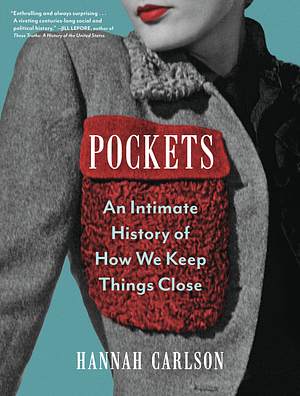
Pockets: An Intimate History of How We Keep Things Close
by Hannah Carlson
Genres: History, Non-fictionPages: 320
Rating:

Synopsis:Who gets pockets, and why?
It’s a subject that stirs up plenty of passion: Why do men’s clothes have so many pockets and women’s so few? And why are the pockets on women’s clothes often too small to fit phones, if they even open at all? In her captivating book, Hannah Carlson, a lecturer in dress history at the Rhode Island School of Design, reveals the issues of gender politics, security, sexuality, power, and privilege tucked inside our pockets.
Throughout the medieval era in Europe, the purse was an almost universal dress feature. But when tailors stitched the first pockets into men’s trousers five hundred years ago, it ignited controversy and introduced a range of social issues that we continue to wrestle with today, from concealed pistols to gender inequality. See: #GiveMePocketsOrGiveMeDeath.
Filled with incredible images, this microhistory of the humble pocket uncovers what pockets tell us about ourselves: How is it that putting your hands in your pockets can be seen as a sign of laziness, arrogance, confidence, or perversion? Walt Whitman’s author photograph, hand in pocket, for Leaves of Grass seemed like an affront to middle-class respectability. When W.E.B. Du Bois posed for a portrait, his pocketed hands signaled defiant coolness.
And what else might be hiding in the history of our pockets? (There’s a reason that the contents of Abraham Lincoln’s pockets are the most popular exhibit at the Library of Congress.)
Thinking about the future, Carlson asks whether we will still want pockets when our clothes contain “smart” textiles that incorporate our IDs and credit cards.
Pockets is for the legions of people obsessed with pockets and their absence, and for anyone interested in how our clothes influence the way we navigate the world.
Hannah Carlson’s Pockets: An Intimate History of How We Keep Things Close begins with the oldest types of pockets we know about, for both sexes, and quickly moves on through the years, discussing the evolution of pockets, the politics of pockets, and ultimately the fashion world’s take on pockets. It’s really not just about pockets: it’s also about women’s lives and how pockets have figured into those (they’ve been more significant than you might think), about how men’s fashions have changed and what those fashions have meant (hands in pockets used to be considered super rude), etc.
As a way of examining a swathe of history and society, it works pretty well, and it’s aided in its pace and interest by the addition of lots of colour images. I did briefly wonder whether it had forgotten all about tie-on pockets or decided to treat them as bags, but it got there after dealing with men’s pockets, in the end.
It made an interesting supplement to Barbara Burman and Ariane Fennetaux The Pocket: A Hidden History of Women’s Lives, 1660-1900, since it fills in some of the men’s side of things, and doesn’t confine itself within that period. Slightly less academic than that book, too, I’d say.
Rating: 3/5
